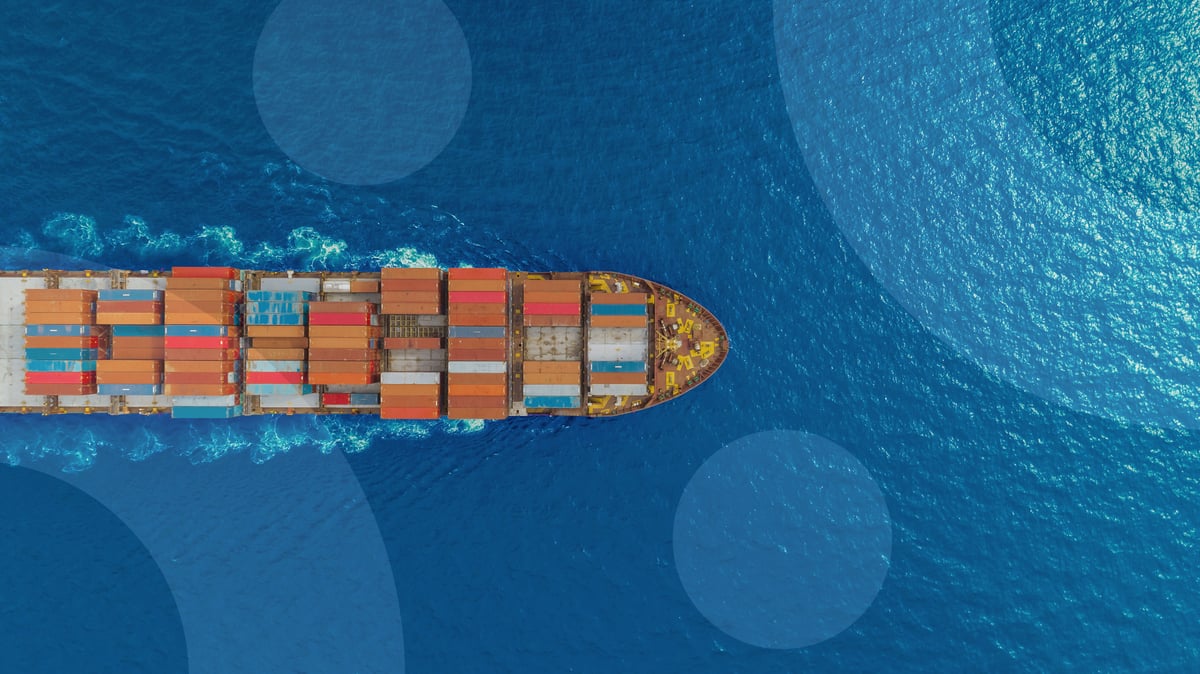AI will be a transformational technology for chief supply chain officers

In recent years, no other technology was more disruptive to supply chains than AI.
During the last two decades, enterprises were able to improve supply chain productivity with the adoption of supply chain planning and execution applications. There were even increased productivity and profitability gains by adopting supply chain digital twins to generate supply chain visibility. But AI is the technology which has the potential to truly deliver on its promise to transform supply chains.
Everyone probably remembers the introduction of blockchain as the next breakthrough for supply chain processes, especially for tracking and tracing of products from cradle to grave. While it had the potential from a technology perspective, in practical terms, it was too cumbersome and expensive to get it up and running. And nobody knew who owned the process and data.
But what if you could use natural language and messaging skills to communicate automatically with any business partner? What if you could convert unstructured information into structured information—and vice versa—on the fly? What if you don’t need to focus on data harmonization, but rather on business problems? And what if you could predict outcomes and generate actions based on full insights into the supply chain?
The promise of AI is huge. But is it real?
In this blog post, we’ll discuss not only the AI opportunities and challenges in supply chains, but also how leading organizations are realizing true value from AI now (not years from now).
Supply chains and the AI opportunity

Watch "The Future of Supply Chain and AI," where I joined supply chain experts from SAP, Google Cloud, and Accenture to discuss what this new era of AI evolution means for supply chains.
The 2023 State of Manufacturing Report found that 85% of leaders in engineering, supply chain, manufacturing, and product development plan to or have adopted AI.
Where does AI fit into priorities for supply chains?
Risk management
The Wall Street Journal reported global supply chains entered 2024 “roiled by disruptions at two of the world’s crucial trade corridors—the Panama Canal and the Suez Canal—even as geopolitical tensions appear set to take a more prominent role in sourcing and distribution.”
Supply chain disruptions are the norm, not the exception.
The AI opportunity here is that AI can play a significant role in supply chain risk management. Enterprises are looking for ways to combine information related to disruptions (e.g. climate information, geopolitical issues, healthcare data) with enterprise data to leverage AI to predict risk levels.
Communication
Secondly, all supply chain collaboration and communication processes with the thousands of business partners, such as customers, suppliers, carriers and outsourcing partners, will benefit greatly from AI technology. AI will enable much easier, faster, and more accurate ways to collaborate.
The collaboration processes are still very cumbersome, and electronic data interchange (EDI) and API integration require a sophisticated IT infrastructure.
With AI, the collaboration and communication processes can be based on unstructured information such as emails with attachments.
AI is capable of classifying the emails, understanding the content of the attachments, and transforming the information into structured inputs for automated follow-up processes. I believe leading enterprises have already started with this approach. Many more companies will follow this year.
Labor shortages
Thirdly, supply chains (particularly those in highly industrialized countries) are affected by labor shortages. For many countries, increases in aging populations results in labor shortages—there are more retiring employees than new employees entering the workforce.
There’s also an increased interest in a four-day work week. There are pilot programs underway in Germany, the United Kingdom (UK), and other countries. Losing one full workday each week means companies in these countries are looking for a more than 20% more productivity gain in the next couple of years. AI can help companies overcome labor shortages.
There are many processes in supply chains which are still very manual, repetitive and document-based, especially in procurement and logistics functions. The combination of AI and software robots will help to automate these processes. We call this combination AI-powered automation and it’s not a luxury for these companies. It's a must-have.
Sustainability
Finally, there’s a need for supply chains to be more sustainable. Logistics makes up 11% of global greenhouse gas emissions every year. The extended supply chain, including manufacturing, is responsible for a much higher percentage. The product circularity, in other words, the share of reused and recycled products, is only at about 7.2%.
AI will help generate more optimized transportation routes and optimized loads. And of course, more automated, and optimized production reduces energy consumption. However, there are many complex and contradictory forces in supply chains, and it will take a few years to truly benefit from AI in this area.
AI challenges for supply chains
There is real hype around AI. However, there are also sources who caution on the potential and the use of AI in general without regulations. Recently, the European Union introduced legislation to ensure the usage of AI is not getting out of control.
And it is a very real concern—even in the business context. What if the data sets AI algorithms are using to learn from are biased or just incomplete? What if AI continues to suggest options, which leads to even more supply chain disruptions? Who can set the boundary conditions for AI algorithms?
To answer those questions, we need to learn, get smarter, and adapt. There will be new job profiles which will look for people who can understand the impact and create boundaries which allow the algorithm to do its magic, and at the same time adhere to all AI standards, rules, ethics, and guidance from society.
Dive deeper: Three principles to use AI at work responsibly
How to successfully leverage AI in supply chains
To benefit the most from AI algorithms it is necessary to embed them into automated end-to-end business processes—also called AI-powered business process automation.
Why is it necessary to combine automation with AI?
Because automation can provide the context (input) to the AI algorithm and trigger the actions from the optimized or generated output of the algorithm. If automation is excluded, these tasks need to be done manually, which results in limited productivity gains.
Leading enterprises are quickly discovering that business process automation is the key to realizing true value from AI (today, not years from now).
Many companies have started to leverage specialized AI algorithms (mainly demand forecasting) and already benefit from the results. And it’s just a matter of time before we will see more offers in terms of AI algorithms replacing traditional statistical or optimization algorithms (e.g. linear programming).
Intelligent document processing combines both specialized and generative AI which sees great and fast adoption. This is not only true for all structured documents, such as invoices, orders, etc. but also for unstructured communications, such as emails. This area has huge potential to replace the cumbersome collaboration and communication process between business partners.
The best way to leverage AI in the supply chain is by embedding it into automated end-to-end business processes. We have only seen the start of the adoption of AI-powered business process automation in the supply chain.
But what type of AI should you leverage?
Generative AI or specialized AI?
Let’s look at two types of AI: specialized AI and generative AI.
Specialized AI focuses on predicting optimized outcomes, based on defined rules and conditions. Examples for supply chain would be demand forecasting, reorder point calculations, inventory optimization, last mile transportation route optimization, field service optimization, etc.
Generative AI learns the patterns and structures of input training data and then generates new data that has similar characteristics. Examples for supply chains are still limited, but customer advisory functions already use generative AI to automatically respond to requests about delivery status, product quality, etc.
Another example are AI assistants being introduced more and more by supply chain application vendors to enable users to communicate with the system in natural language.
Conclusion
AI is very real for supply chains, and it is the first technology to enable a step-change in productivity in supply chains since the adoption of supply chain planning applications in the early 2000’s.
It is still early, but the obvious areas to leverage AI in the supply chain are in risk management, business partner collaboration, labor management, and sustainable supply chain processes.
While AI potentially solves many challenges that supply chains deal with, business process automation is the path to realizing true value from AI today. In other words, business process automation is how enterprises can make AI work harder across the supply chain.
If used wisely—and with the best data sources—the power of AI is limitless and will truly transform supply chains.
Find out how to build an autonomous supply chain that goes the distance. Get the e-book "Destination: Supply chain automation."

Global Supply Chain Practice Executive, UiPath
Get articles from automation experts in your inbox
SubscribeGet articles from automation experts in your inbox
Sign up today and we'll email you the newest articles every week.
Thank you for subscribing!
Thank you for subscribing! Each week, we'll send the best automation blog posts straight to your inbox.



